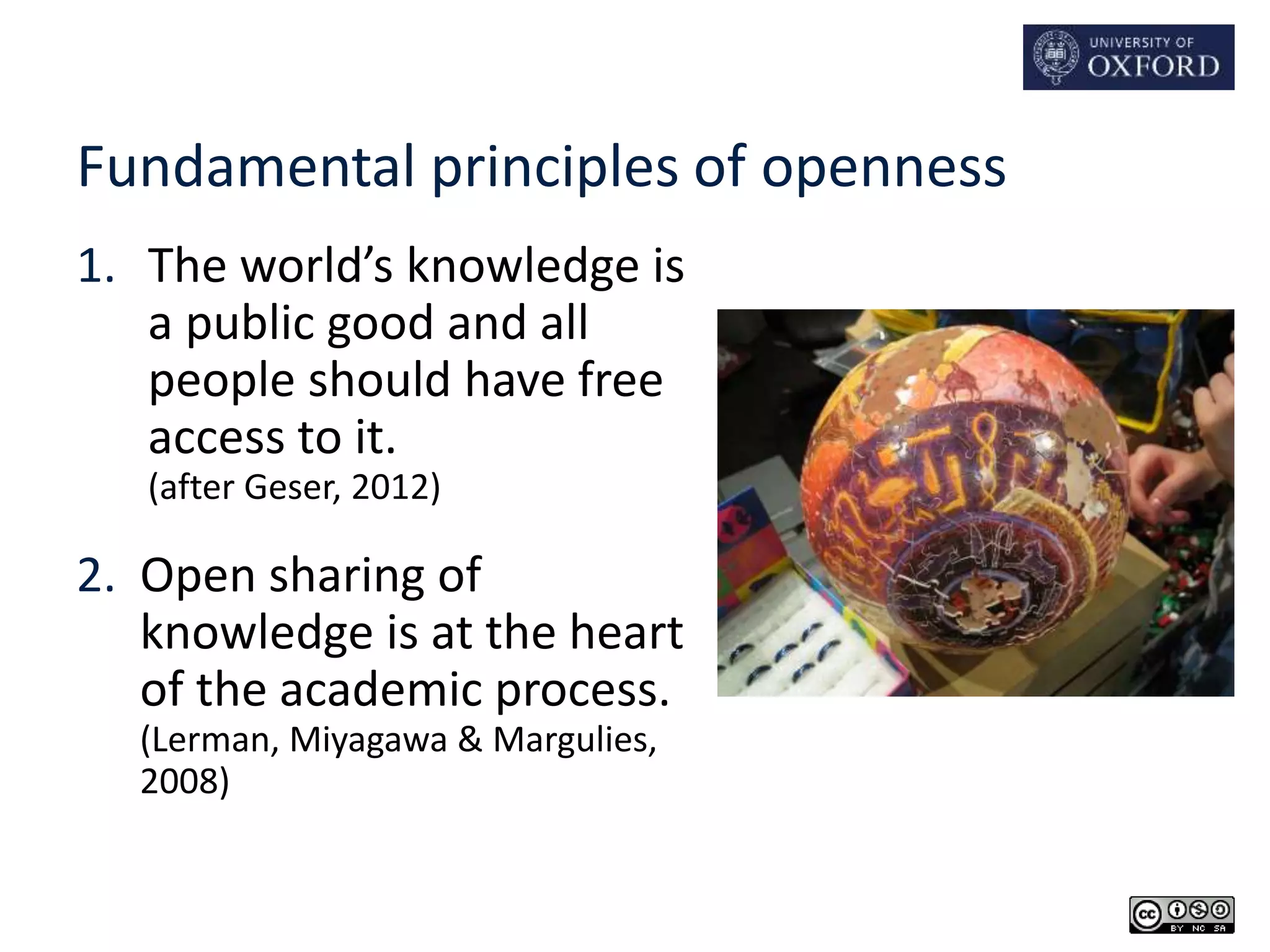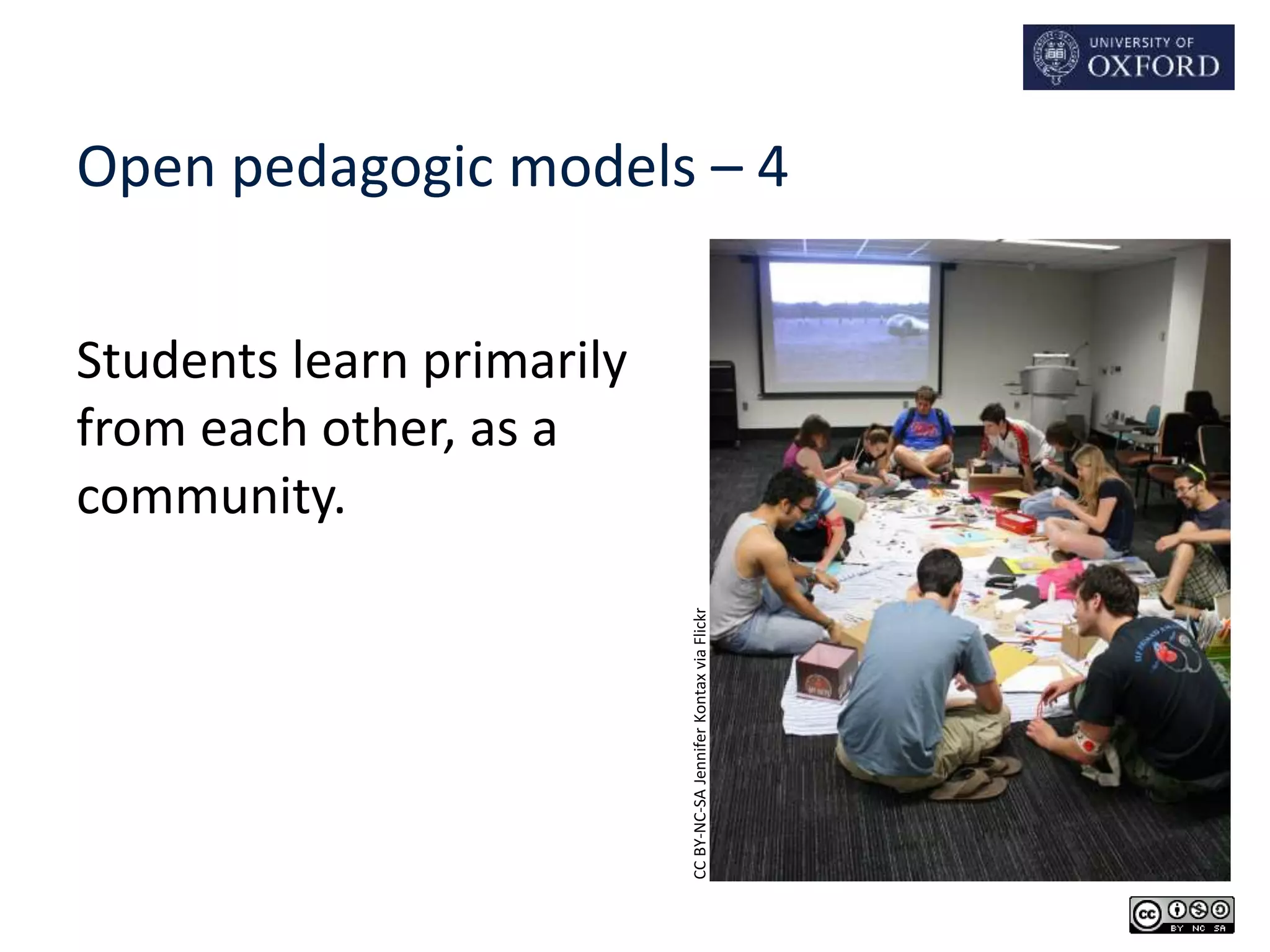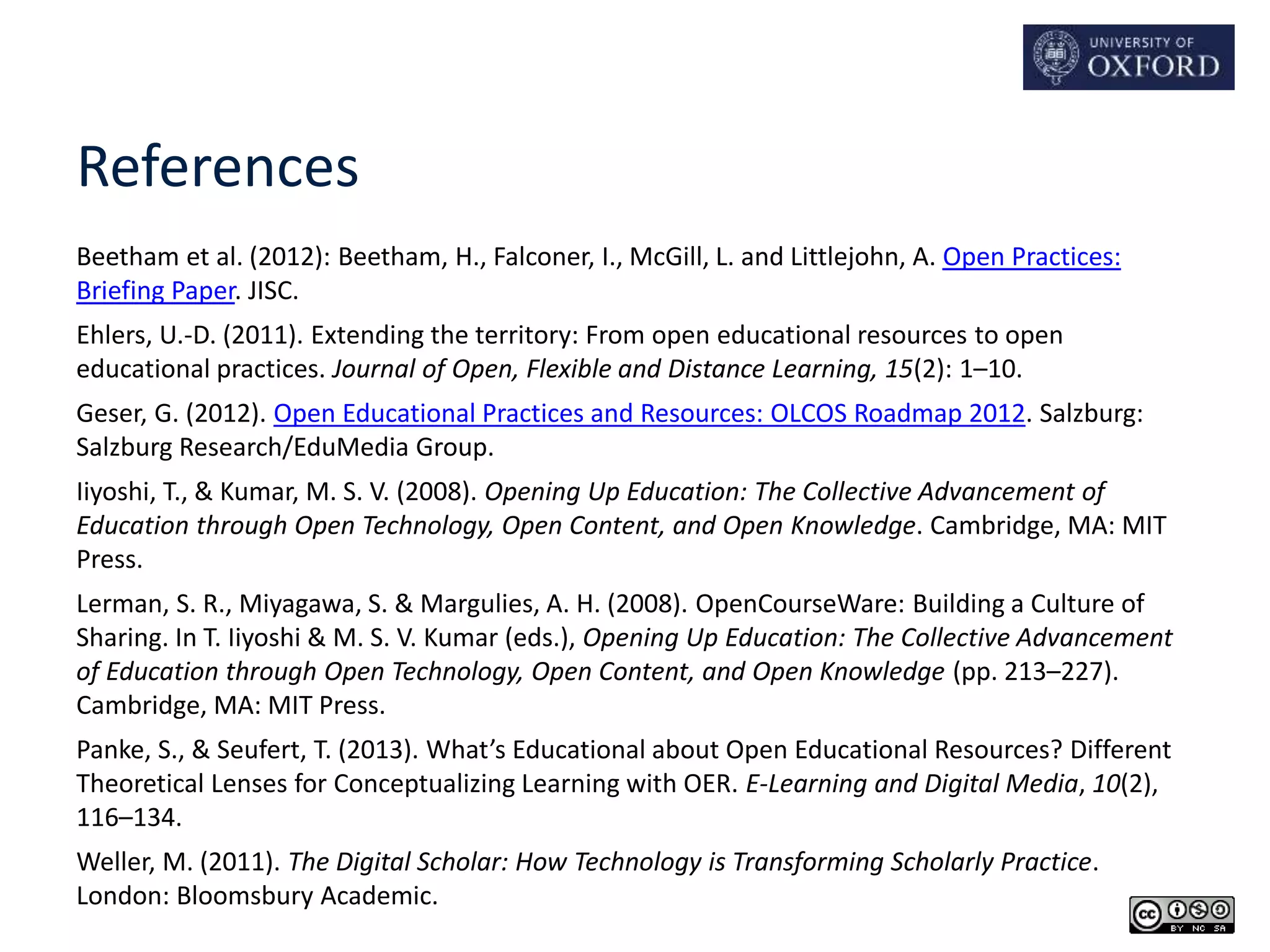The document discusses open education and the necessity of new pedagogic models that support collaborative learning practices over traditional, closed approaches. It emphasizes fundamental principles of openness, such as free access to knowledge and the role of teachers as learning advisers, and examines whether innovative open pedagogies are essential or if existing practices can be adapted. The work highlights the importance of social interaction, peer learning, and co-construction of knowledge in an open educational environment.









![Are new “open” pedagogies essential? Or…
• …can we achieve the same pedagogic ends using “closed”
content? (cf. Beetham et al., 2012)
• …when designing for students’ learning, is it sufficient for
teachers to recast/reimagine existing pedagogies? (cf. Weller,
2011)
• …can teachers simply “adopt those aspects of open
practice that amplify their existing pedagogic practices
most effectively”? (Beetham et al., 2012)
• …can researchers employ existing theories as “conceptual
tools” for understanding learning in an open world? (cf. Panke
& Seifert, 2013)
• …is the value of openness that teachers can “[rediscover]
the specificity of their disciplinary pedagogy through a new
lens … rather than discovering a new ‘open’ pedagogy”?
(Beetham et al., 2012)](https://image.slidesharecdn.com/apt2014masterman527080714-compressed-140917094556-phpapp02/75/Supporting-Students-Learning-in-an-Open-World-10-2048.jpg)


